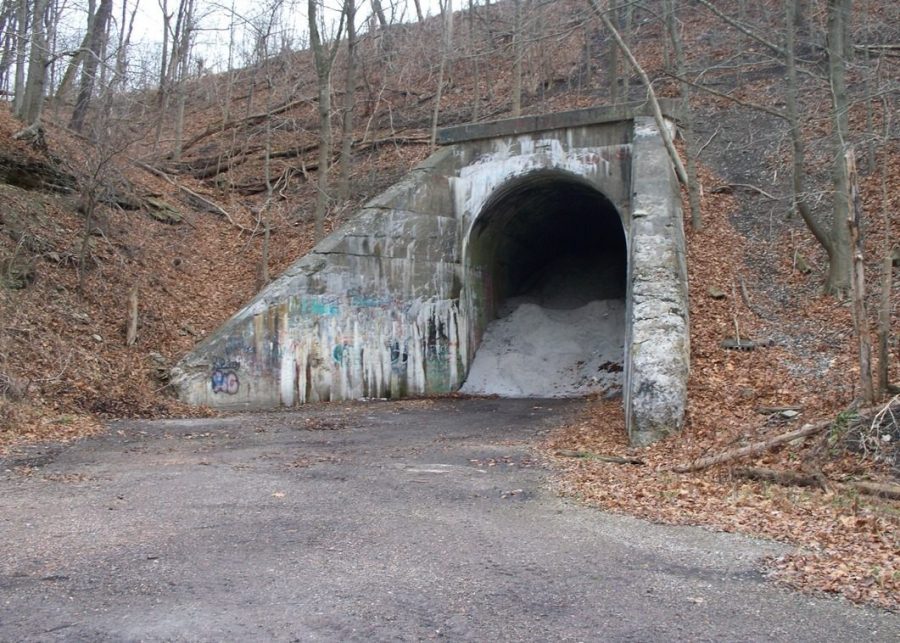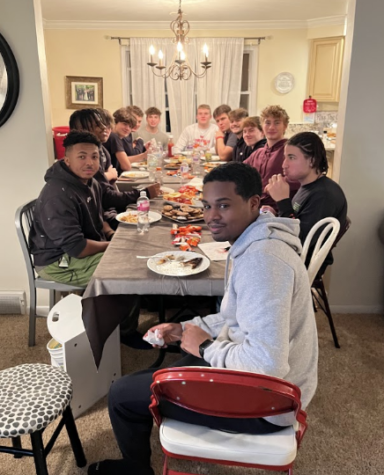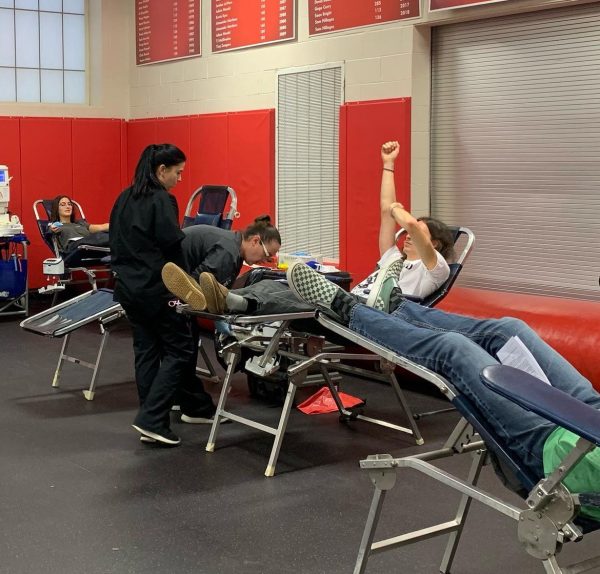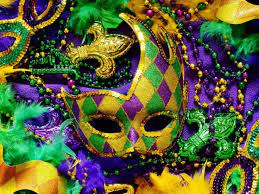Arrowhead Scares Part I
October 8, 2020
It’s October! That means that it’s time to pull out the scary movies and candy while you settle into the mood for Autumn. I really love all aspects of fall, from the cozy atmosphere to the horror movies and attractions. No other season has quite a homey, comforting feeling surrounding it for me. One of my favorite things has to be the horror, though. Pennsylvania has its fair share of scary stories to tell, and whether some of them are real is completely up to your own interpretation. For the first week of October, I wanted to share my top five haunted locations in PA. Pennsylvania doesn’t have too many interesting ones with a lot of history, so I chose ones that I knew the history of well.
Hankey Church
Hankey Church Road is a lot more personal to me than some of these other locations. I moved to North Hills two years ago, but I grew up in Plum. This isn’t a haunted location you can look up as easily as any of the others in Pennsylvania, but I had to include what I’ve heard about it from my family.
The road seems normal when you look at it. It snakes through a beautiful forest and seems like a nice place overall. The church across from the cemetery burned down in the 1980s, leaving only the cemetery. The most questionable part is that a minister killed his entire family and burnt the church down, so the church-goers lynched him on the largest tree of the property. Another story says that he committed adultery and was lynched. Yet another recalls that there was a young girl who died on the road. Whether or not any of this is true, tourists who have gone to the road have seen or experienced orbs of light, numbness, cold spots, floating feelings, and ghosts have even been sighted. My mom went there a while ago with my little sister when she was two and said that my sister kept seeing someone in one area of the cemetery, but there was no one there. There was also a photo where there seemed to be a second pair of legs next to my cousin, who was otherwise alone in the photograph. A family friend said they took the road a few years ago as a shortcut. Underneath the tree where the minister was killed, their car battery died and something started to bang on the car and shake it from the outside. When they got home, there were dust marks all along the sides of the car.
Green Man’s Tunnel
This one is a lot closer to home, as it’s only about forty-five minutes from the high school. Once you learn about the story behind the Green Man, you may feel sadder over feeling freaked out about the supposed haunting of this tunnel.
Raymond Robinson was a man living in Western PA who lived to be 74 (1910-1985). When he was nine, he climbed a pole to see a bird’s nest in a nearby tree. Unaware of the danger, he was electrocuted with a voltage that ranges from 1,200V and 22,000V. Not even a year earlier, a little boy had died when this happened. Robinson’s recovery was a miracle; however, he lost his eyes, nose, and right arm. This disfigurement would scare others who lived near him, so he rarely left home. Therefore, Robinson would stroll along the streets at night time. This turned him into a local legend in the area and his story started to be told wrong in favor of a scarier spirit haunting this tunnel. Some say if you visit the tunnel you’ll see a green, glowing silhouette. Whether you believe that Robinson came back to haunt the tunnel or not, the story isn’t as scary as it is sad.
13 Bends
The thirteen bends is another story in Pittsburgh that has unclear details surrounding it. There are three versions of the story that have been told, but each could actually have happened as the locations are on different parts of the bends.
The most popular recollection is that of an orphanage. One evening, a teenager was said to have been playing with matches and dropped one that set the orphanage on fire. Many of the young children were trapped inside, while others later succumbed to burn injuries. One version of the story says 13 children died. If you’re brave enough to test it, you may go on the road and hear screams, bells, and splashing in a nearby creek. If that isn’t enough, some people put flour or baby powder on their car. When they get out, small handprints mark the dust. Some versions state that going up, you’ll count thirteen bends. Going down, you’ll count only twelve.
The next legend is about a school at the end of the road. It was a Catholic girls’ school in the early 20th century. One day, a man went to the school and killed thirteen of the young girls. He buried one girl at each bend of the road. Some say that flashing your high beams at these bends will allow you to see one of the girls’ ghostly figures.
Finally, some speculate that the road is haunted by three miners. There was a mine shaft deeper in the forest nearby, but a collapse trapped three miners inside who died. The mine was never reopened. There’s a trail off of the side of the road that leads to the mine. During the day time, the miners wander the trail until seen by someone.
Pennhurst
Pennhurst is similar to the Green Man in the way that it’s pretty sad. However, it’s also terrifying to think about. In the 21st century, we’re used to feeling safe in hospitals or psychiatric facilities. Pennhurst was one of the many terrifying asylums across the U.S. during a time when they weren’t regulated well. In the 1960s, Bill Baldini exposed the horrors of Pennhurst Asylum to the public.
Patients were strapped down to beds that resembled cribs. Inmates were seen rocking back and forth, pacing, and twitching nervously. Many were simply going insane just by being in there. One patient was asked what he wanted most in the world and he replied, “to get out of Pennhurst.” After a TV program’s investigative report exposed what was really happening there, Pennhurst was labeled the shame of Pennsylvania. It housed immigrants, orphans, the mentally ill, criminals, and even physically handicapped patients. In the 1960s, there were nearly 3,000 patients but only 200 got enough mental stimulation through recreational activities. Their budget was small and they had barely any staff members. Because of this, doctors would often brutally take care of patients who were misbehaving with painful injections. Pennhurst closed in the 1980s after years with a lack of funding, court cases, and awful conditions. Pennhurst may have led to safer conditions in hospitals, but the haunting conditions leave an impact on the building today.
Pennhurst is one of the most popular places for ghost hunters to travel to. Some have heard whisperings from disembodied voices stating that they’re scared, upset, and want to be left alone. They ask, “Why won’t you leave?” In one part of the building, called the Quaker Building, shadows will appear and disappear randomly. These shadows have been reported as small children among others. Doors and rocking chairs move on their own within the halls. One investigator was shoved from behind near a stairway and a large, red mark was on their back. One investigator was scratched on the arm. In the basement, some objects have been known to move as if they were thrown. EVPs and EMFs, tools used by ghost hunters to detect spirits, started to get spiked readings. In another building, a woman wearing a nurse’s uniform was seen. Unknown sounds, shadow people, voices, and investigators getting touched by seemingly nothing at all have plagued several buildings on the property. The property has no running water, but they also heard a toilet being flushed. Investigators surrounded one building that had loud voices inside while some looked inside the building. There were no people.
Eastern State Penitentiary
Eastern State is a prison in Philly. It’s one of the first prisons to use the concept of solitary confinement. Criminals like Al Capone were housed there and you can actually tour it! It’s a museum and a U.S. national historic landmark.
Each prisoner was held individually in a small cell that had a small yard attached for exercise. There was a small door where guards could pass food through without opening it. The small doors were made so that prisoners couldn’t get out easily and couldn’t attack. Eastern State seems like a good place. Prisoners could keep gardens and pets even. They had running water and during winter, the water was hot. Eventually, the solitary confinement ended due to overcrowding problems. However, prisoners could spend years by themselves. Their family couldn’t visit them no matter what. Furthermore, the prisoners were physically and psychologically tortured during their stay. Prisoners would be doused in freezing water during winter, their tongues were chained to their wrists so their tongues would tear if they struggled, they were strapped in tight leather chairs for days, they had to wear hoods if they left their rooms so they wouldn’t see other humans and speaking was punished. Some prisoners were able to feed themselves, but those in straitjackets were forced to eat and often gagged. The worst punishment was a pit called “The Hole.” Prisoners would be in this hole for up to two weeks with no light, human contact, or food.
While Eastern State’s history is more solid than many other places, whether or not its haunted is disputable. Many paranormal investigators visit each year. Some cellblocks are known for voices and laughter, shadow figures, and faces. Typical haunting stories such as footsteps, whispers, and cries have also been told. Gary Johnson is a specialist who comes in to help maintain the prison’s locks. In the 1990s, he opened a lock and a dark force gripped him so that he couldn’t move. He saw faces in torment on the walls and horrible energy escaped from the cell. Some say that the tales of ghosts go back to the 1940s before it was closed. While Eastern State’s history of hauntings isn’t as rich as some others, it’s still an interesting look into what prisons were like before reform. Currently, it has a museum and a haunted house that is considered one of the best haunted houses in America.













